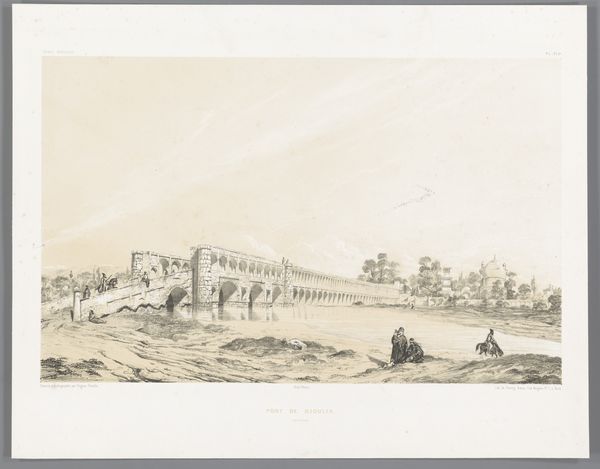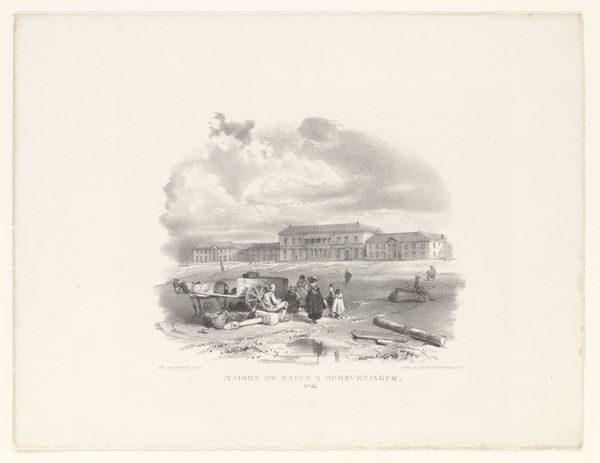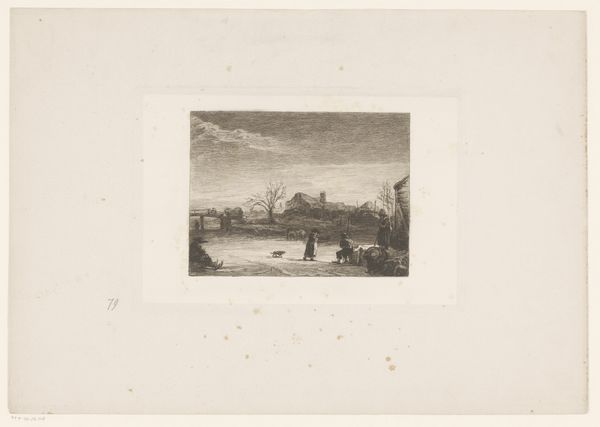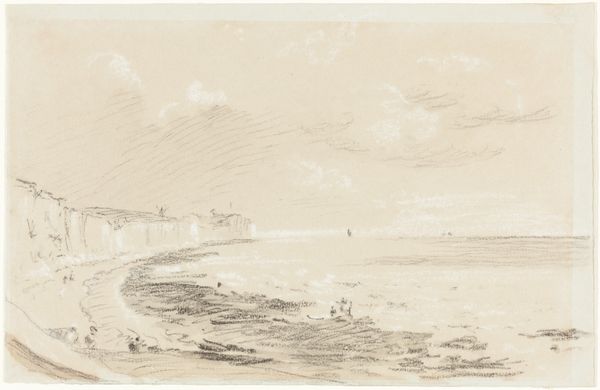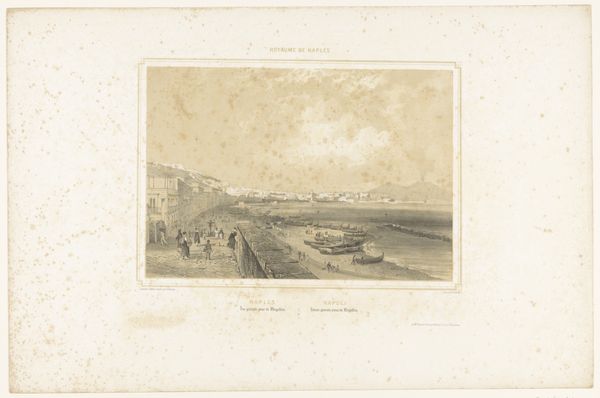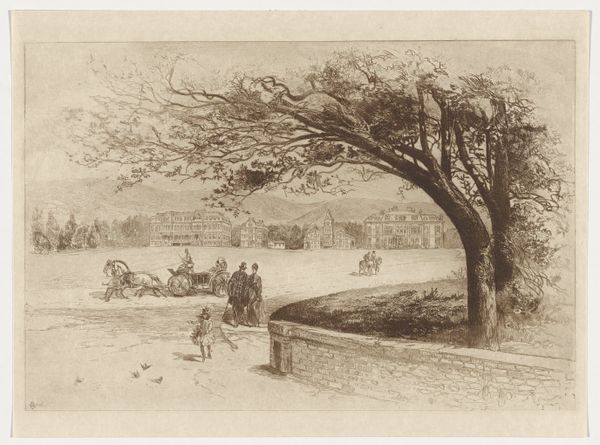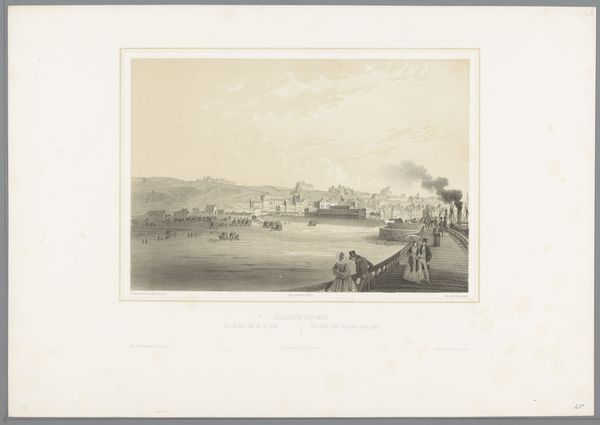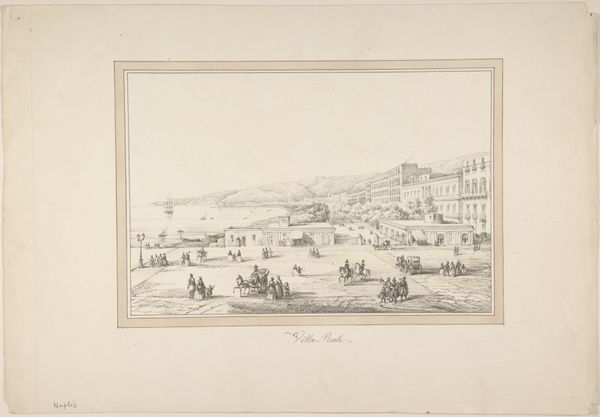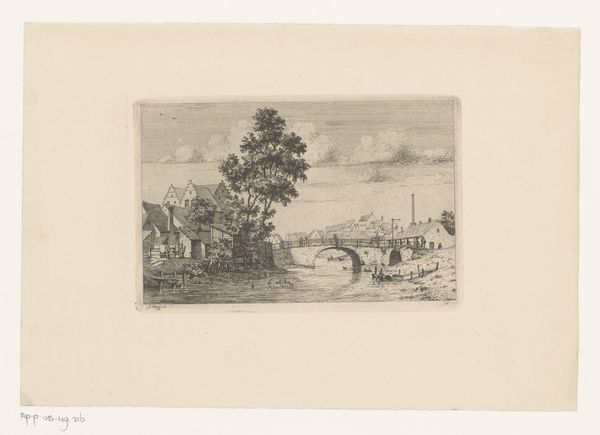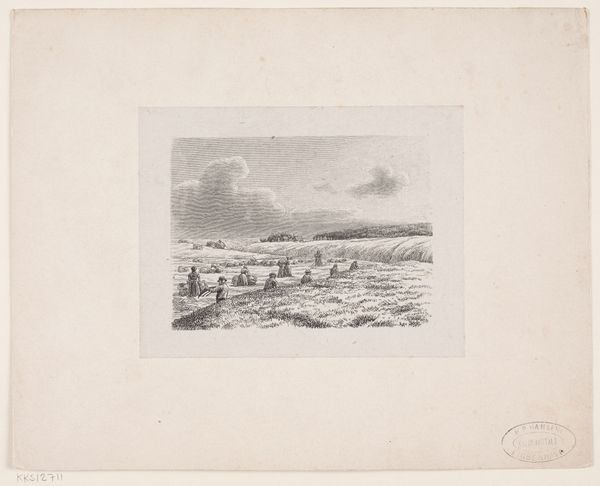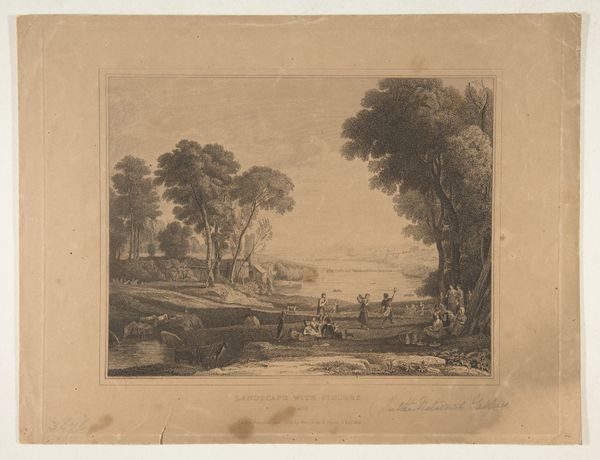
Dimensions: height 394 mm, width 530 mm
Copyright: Rijks Museum: Open Domain
Curator: Ah, here we have François Stroobant's "Figuren aan de kust met Sidon op de achtergrond," created in 1852. It's an etching, a genre scene with a clear romanticist influence, held here at the Rijksmuseum. Editor: My goodness, look at that faded sepia tone. It evokes a wistful, almost dreamlike quality. The figures are arranged so casually on the shore, as if caught mid-conversation in a sepia-toned photograph. Curator: The romanticism in Stroobant's work places figures within broader historical and geographic contexts. Travel and Orientalism were strong currents at that time. This image represents an encounter with a specific, yet exotic place—Sidon. It feeds into Europe's fascination with the Levant. Editor: Exotic, definitely. And a touch melancholic. I'm wondering what those folks are talking about on the beach. Do you think Stroobant's trying to make a commentary on the relationship between, say, Europeans and the people they met during their travels? I get this subtle vibe of… displacement, maybe? Curator: Displacement could indeed be part of it. European audiences largely consumed artworks like this within a power dynamic. Travelogues and artistic depictions played a crucial role in constructing knowledge—or sometimes, misconceptions—about faraway cultures. It would not only serve as a depiction of Sidon but also function to construct a European perspective. Editor: Perspective...yes. It's there, like the way the scene unfolds, further and further away, until it fades like a memory. What really hooks me is the everydayness of it all. The way they lounge, their gestures—that dog scratching! The whole piece sings of stolen moments, of lives glimpsed in transit. Curator: Exactly. And the Rijksmuseum preserves not only the work but also, potentially, an element of the European gaze. Displaying works like this compels us to look critically at how history and art shape perceptions even today. Editor: Which makes me wonder, how *would* folks on that shore have depicted us? It really twists the head, thinking about that. Alright, color me considered! Thanks for that glimpse. Curator: My pleasure. Thinking about those exchanges and how we can contextualize them remains one of the crucial roles of the art historian.
Comments
No comments
Be the first to comment and join the conversation on the ultimate creative platform.
